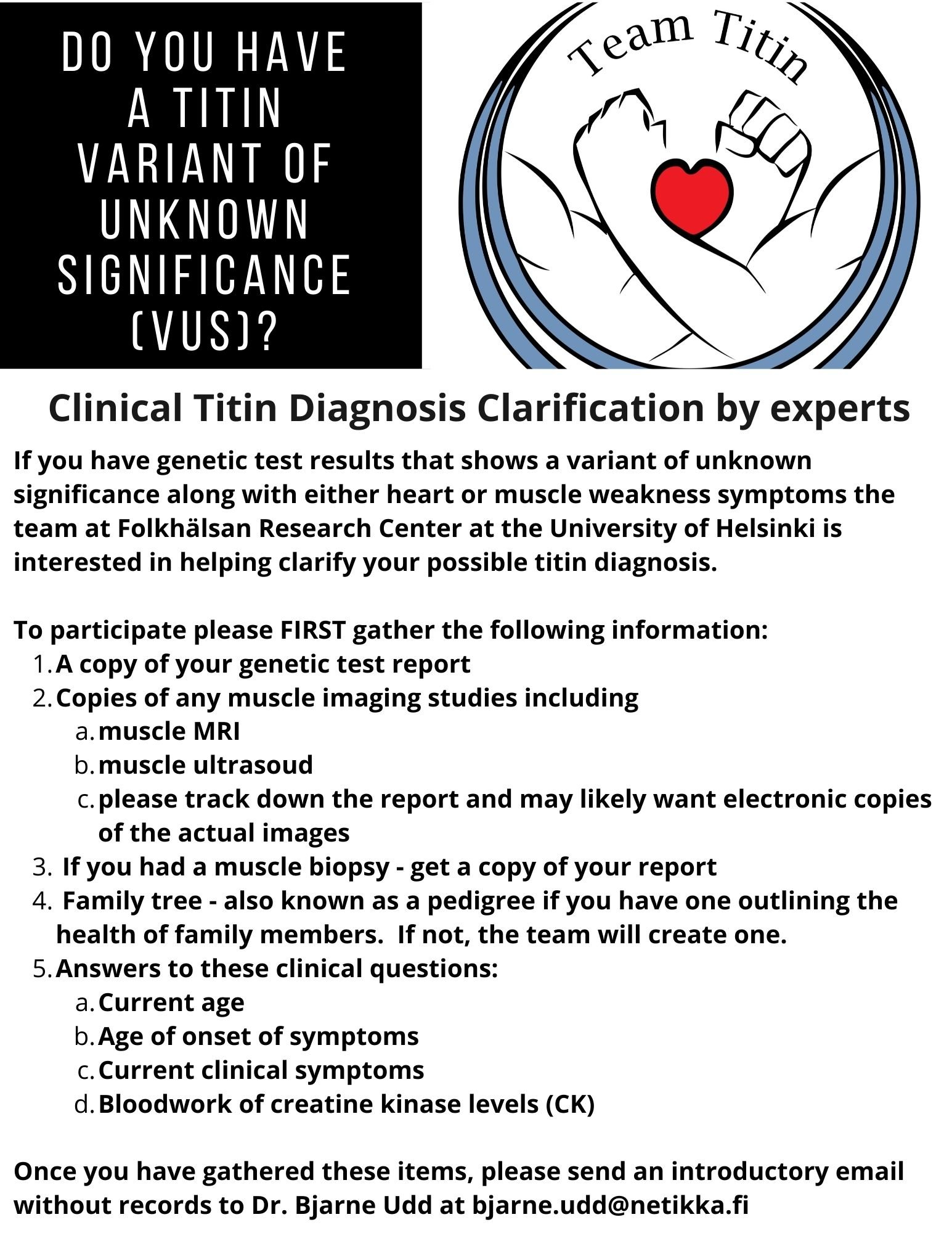Congenital Muscular Dystrophy (CMD)
There are over 30 forms of CMD, each with a specific presentation, cause, and progression.
Page Contents:
What is CMD?
What Organizations and Resources are Available?
What are Titinopathies?
All forms of CMD are considered rare diseases and have significant barriers to resources, access to care, and awareness.
The resources and information compiled on this page were driven by the education provided through the coordinated efforts of the many people who organized the 2022 Scientific and Family Congenital Muscular Dystrophy Conference attended by Clover Genetics representative, Rachel Baer, Co-Founder and Director of Education. We are humbled and thankful to have had the opportunity to learn from the CMD community.
The educational presentations from both the scientific and affected patient community have been referenced along with resources from: CureCMD.org | MDA.org | raredisease.gov | FDA.gov
Congenital Muscle Disease International Registry: Leading the Way to a Treatment and Cure
One of the struggles in developing treatments for rare diseases is that there are requirements to have data from a certain number of patients to begin a safe clinical trial or even identify the best scientific technique to begin developing a targeted treatment. This is why it is critical for the future of the CMD community to ensure that as many affected patients as there are available and willing to participate are signed up for the CMD International Registry. Once registered, patients can partner with advocacy organizations, researchers, and clinicians as trials or research opportunities arise for eligible patients.
Visit their website at cmdir.org to register or learn more about the role of the CMDIR.
The CMD Tissue Repository: Accelerating Research for CMD
The CMD Tissue Repository collects left over muscle biopsy tissue from any surgeries or tests patients may have had. These samples allow scientists to have a greater insight about how the person’s disorder is impacting their tissue and the progression of these rare diseases.
To learn more, visit MCW.edu/cmdtr
Muscular Dystrophy Association
Non-Profit Organization
Providing Supports, Finding Treatments and Cures
Visit MDA’s website to learn more about utilizing their services, identifying care, events, research, reading patient testimonies, blogs, or finding additional resources to support those across all forms of muscular dystrophy.
Cure CMD | Non-Profit Organization
Increasing Awareness, Advocacy, Support, and Research
Visit CureCMD’s website to learn more about their mission, events, and what they do for the CMD community.
A Foundation Building Strength For Nemaline Myopathy | Non-Profit Organization
Finding treatments and supporting Nemaline Myopathy research
There are currently no specialized treatments for Nemaline Myopathy, and this organization aims to change that. Visit their site to learn about the research they support.
Learn more about CMD from these General resources:
Titinopathies:
The Titin Gene (TTN) codes for the largest protein in the human body, titin! It is critical for the function of muscles, notably the heart, and when it is altered, it can cause a variety of different disorders across a broad spectrum that have characteristic traits of muscular dystrophies, frequently with cardiac and respiratory symptoms.
These syndromes can include a number of disorders ranging in severity:
Limb-Girdle Muscular Dystrophies
Tibial Muscular Dystrophy
Heart Problems (Cardiomyopathy, arrhythmias, and more)
Multi-Minicore Disease with Heart Disease
Centronuclear Myopathy
Hereditary Myopathy with Early Respiratory Failure
Early-Onset Myopathy with Fatal Cardiomyopathy
Unspecified Muscle weakness
Childhood-Juvenille Onset; Emery-Dreifuss-Like Phenotype without cardiomyopathy
Salih Myopathy
Team Titin
Team Titin Resources: The following resources were shared with Clover Genetics by Team Titin for use by affected patients and their families. These resources are not for commercial use or reproduction. Visit Team Titin’s website (titinmyopathy.com) to learn more about the work they do!
Downloadable PDF:
Learn about Recessive Titinopathy
Downloadable PDF:
Information for families with variant(s) in the Titin gene (TTN)
Learn more about CMD from these General resources:
If you are interested in genetic counseling or testing for suspected or diagnosed muscular dystrophy, or if you have questions, comments, suggestions, and would like to connect with us regarding resources or collaboration for patient advocacy, please contact us using the form below:





